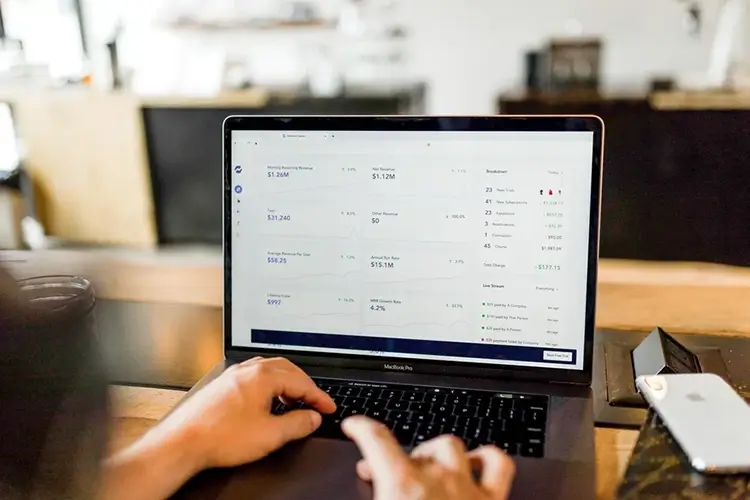Everyday low pricing is no longer a sustainable business model. In most categories, margins are too small. Setting the lowest price for every product spells bankruptcy. Even in categories with healthy margins, margins may quickly evaporate once competitors start undercutting each other.
You need to create a smarter, tailored pricing strategy. Within that strategy, you should take advantage of the difference in dynamics among products. Differences in both the product types as well as the competitor landscape (the market conditions). We will zoom into both aspects within this blogpost.
By using these differences, you can find the right balance between revenue and margin. This balance is subtle and requires a continuous shift of products between various pricing strategies. The key is to stay competitive where visible to customers, while winning additional margin where possible.
Utilize the difference in product types
Products respond differently to price changes. Regarding one product, revenues drop when you are slightly outpriced. For other products, you see no revenue decline when prices are set a bit higher.
Split your assortment so that you have different pricing strategies that match consumer behaviour. In our discussion of the high-runner strategy, we explain how you can use traffic and sales data to classify your products in different groups. It is most important to have a competitive price set for products that have the most traffic.
A television is an example of such a product. Consumers investigate the cheapest price and buy the product at that location. However, the price matters less for cross-sell opportunities (wall-mount and the HDMI cable). At this point, the consumer made the choice to buy the television. It will be easy to buy the accessories with it. Get more margin on the accessories to compensate for the competitive price of the television.
A high runner strategy is based upon traffic and sales data to classify products into groups. Price elasticity data can be used to classify products in a similar way. Label products high, medium, or low elasticity and apply different pricing rules. You want high-elastic products to be competitive (e.g. position number 1 among your competitors). Medium and low elastic products can be less competitive (e.g. position number 2, 3 or even higher).
Talk to one of our consultants about dynamic pricing.

Utilize the difference in the market conditions
As described in our article about competitor price changes it is important to think carefully when you want to follow prices down.
Most consider these scenarios when prices are going down. But when implementing dynamic pricing, it is equally important to think about the opportunity to increase pricing. If your competitors follow your lead in setting prices lower, they may follow when setting prices higher as well.
For example, if there is just one other top competitor priced on the same level, try to increase your price by a few euros. There is a big chance your competitor will follow your pricing strategy.
You both remain equally competitive (so revenues will not drop that much) but achieve a better margin.
The same applies when there are multiple competitors (but you and one other competitor are priced lower than the rest). Increase our price to the level of the other competitors and you in turn raise the overall bottom price.
These tactics are especially effective, if you combine it with the different product types. For high elastic products, you might want to pull the market up if there is only one competitor. But, for low elastic products, you can afford to do it sooner (when multiple competitors host the same price).
Utilize temporary scenarios where a competitive price is less important
Some products remain price sensitive. For a higher-price television, a few euros difference can have a big impact on your revenue. However, in other scenarios, price is less important. Make use of these scenarios!
Use stock:
For popular products, some retailers are reluctant in setting a price higher than the competition. But, if you’re running low on stock and there is a high consumer demand, why not increase your prices?
You might not sell at the same turnover, but what is the use of running out of stock way before the new stock comes in? You might as well make additional profit!
For more ideas on how to use stock, see our blog post on stock based pricing.
Think of promotion impact:
Promotional periods inspire different sales dynamics. Most thought is put into the promotional product itself. Yet, there is opportunity to use this period to adjust pricing on similar products.
Imagine you have a particular television discounted. This product will cannibalize sales on similar products. Revenues will temporarily drop, creating an opportunity to pull the market up. As revenue on that particular product is down, increase the price and pull your main competitors with you.
Regarding your promotional product itself, your competitors often decrease their prices to match your promotional price. Once the promotion is over, prices seldom return to the same level as before. At this point, competitors monitor one another, and nobody wants to increase prices.
To give the market a chance to recover, consider your old price point (the one before the promotion price). This can pull the price back to a more profitable level.
Check your delivery / installation capacity
There can be moments when your sales are limited by capacity issues. Consider a service that delivers and installs washing machines. If all installation slots in the coming weeks are almost fully booked, this limits the amount of washing machines sold. So, make sure your price matches this scarcity so you maintain good profit.
So... how do you implement such Logic?
We recently added new (beta) functionality to our pricing engine, called market conditions. This allows you to select parts of your assortment on both product assortment conditions as well as market conditions:
Product assortment conditions
The *if* statement that you are familiar with lets you select any product characteristics. Either static parameters, like categories and brands, or more dynamic parameters, like sales and stock levels.
Market conditions
An additional layer of conditions that allows you to select any combination of market scenarios. There are 3 templates:
- When a certain number of competitors are present for that product
- When a certain number of competitors are lower/higher than my current selling price
- When a min/max/avg/most-occuring price is lower/higher than my selling price
The combination of product assortment and market conditions is very powerful and enables you to outsmart competitors by tuning our repricing engine. This allows you to follow your desired pricing strategy regarding any subset of your assortment and in any market scenario.
The market conditions will allow you to implement the above tips. Moreover, conditions allow you to create solutions for other dilemmas as described in our other dilemma blogs:




